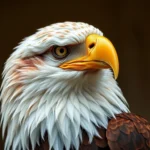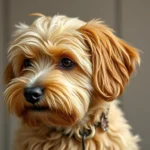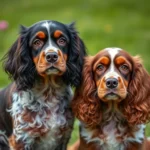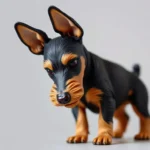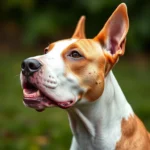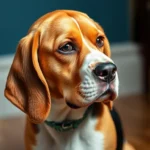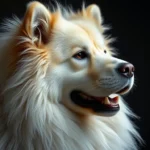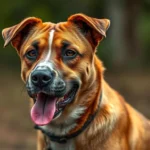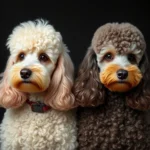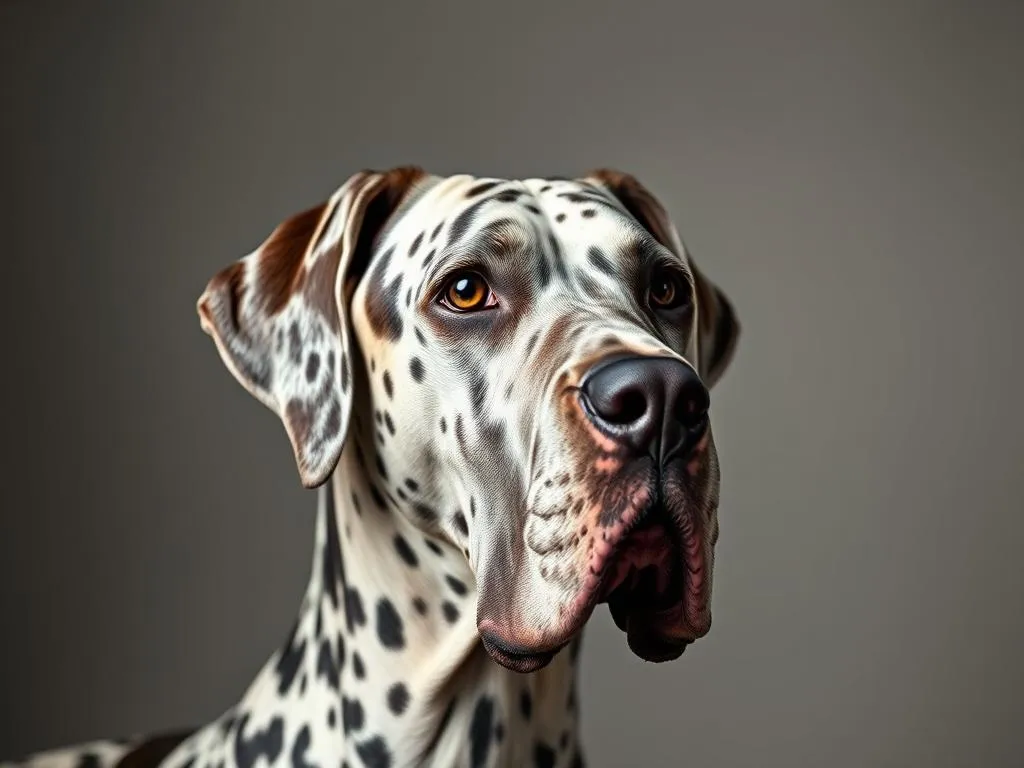
Introduction
Dog breeds come in all shapes and sizes, each with its own unique characteristics, history, and purpose. Among the many breeds, the Great Dane stands out for its impressive stature and gentle disposition. Known as the “Apollo of dogs,” the Great Dane combines elegance and strength, making it a beloved companion for many families. One particularly striking variation of this breed is the Mantle Great Dane, recognized for its distinctive color pattern that adds an extra layer of charm to the breed. In this article, we’ll dive deep into the world of the Mantle Great Dane, exploring its history, traits, and care requirements.
Understanding Dog Breeds
Definition of Dog Breeds
A dog breed is a specific group of domestic dogs that have been selectively bred for particular traits, resulting in distinct physical and behavioral characteristics. Breeding practices date back thousands of years, with early humans selecting dogs for various purposes, such as hunting, herding, and guarding. Over time, these selective breeding efforts led to the establishment of specific dog breeds, each tailored to meet the needs of their human companions.
Importance of Breeds
The significance of dog breeds lies in their diverse temperaments, sizes, and care requirements. Each breed is classified into various categories, including working, herding, toy, hound, and terrier, among others. Understanding these classifications helps potential dog owners choose a breed that aligns with their lifestyle and family dynamics. For example, working breeds like the Great Dane are often larger and require more space and exercise, while toy breeds may be better suited for apartment living.
Overview of the Great Dane
History of the Great Dane
The Great Dane has a rich history that dates back to ancient civilizations. Originating in Germany, the breed was developed from a mix of Mastiffs and Greyhounds. Initially bred for hunting large game, such as boars and deer, Great Danes were also used as guard dogs for nobility. Their impressive size and regal appearance quickly made them a favorite among the aristocracy, leading to their nickname, the “gentle giant.”
Physical Characteristics
Great Danes are known for their towering height and well-proportioned bodies. Males typically weigh between 140-175 pounds, while females range from 110-145 pounds. They can stand anywhere from 28 to 34 inches tall at the shoulder. The breed’s coat is short and sleek, available in various colors, including fawn, brindle, blue, black, and the Mantle pattern.
The Mantle Great Dane is characterized by its black and white coat, resembling a tuxedo. This striking color pattern features a predominantly white body with a black saddle-like marking over the back and black patches on the head, making them stand out in any setting. Their distinctive features also include a strong, rectangular build, long legs, and a square-shaped muzzle.
Temperament and Behavior
Despite their imposing size, Great Danes are renowned for their gentle and friendly nature. They are typically affectionate with their families and can be quite sociable with strangers. Early socialization is crucial, as it helps them develop into well-adjusted adults. While they are generally good with children and other pets, their size means that supervision is necessary, especially with smaller animals.
Common behavioral issues may arise if a Great Dane is not adequately trained or socialized. These can include separation anxiety, excessive barking, or jumping. Addressing these challenges early on, with positive reinforcement training methods, can help mitigate potential problems.
The Mantle Great Dane
What is a Mantle Great Dane?
The Mantle Great Dane is a striking variation of the breed, easily identified by its unique color pattern. The Mantle pattern features a white base coat with a black “mantle” that covers the back and sides, along with black markings on the head and legs. This color contrast gives the Mantle Great Dane a sophisticated and elegant appearance, reminiscent of a well-tailored tuxedo.
Compared to other Great Dane colors, such as fawn or blue, the Mantle pattern is less common, which adds to its allure. Each Mantle Great Dane may have slight variations in their markings, making every individual unique.
Characteristics of the Mantle Great Dane
In terms of physical traits, Mantle Great Danes share the same general characteristics as their peers, including a robust build and impressive stature. However, their striking color pattern sets them apart visually. There’s no significant difference in temperament between Mantle Great Danes and other color variations, as their personality traits are largely dictated by genetics and upbringing rather than color.
Popularity and Recognition
While Great Danes, in general, are well-known and loved, the Mantle Great Dane has carved its niche within the breed community. They are recognized by major breed organizations, and their unique appearance often makes them a favorite in dog shows and competitions. The American Kennel Club (AKC) recognizes the Mantle color pattern as part of the Great Dane breed standard, allowing them to compete alongside other color variations.
Care and Maintenance of a Mantle Great Dane
Nutrition Requirements
Proper nutrition is critical for the overall health and well-being of a Mantle Great Dane. These large dogs require a balanced diet rich in proteins, healthy fats, and essential nutrients. High-quality commercial dog food formulated for large breeds is often recommended, as it helps support their growth and maintain their weight.
Feeding guidelines can vary based on age, activity level, and individual health needs. It’s vital to monitor their weight and adjust portion sizes accordingly to prevent obesity, which can lead to numerous health issues. Consulting with a veterinarian can help determine the best dietary plan for your Mantle Great Dane.
Exercise Needs
Mantle Great Danes are active and energetic dogs that require regular exercise to stay healthy and happy. Daily exercise recommendations typically include at least 30 to 60 minutes of physical activity, such as walking, playing fetch, or engaging in agility training.
Due to their size, it’s essential to provide them with ample space for exercise. A securely fenced yard is ideal, but they also enjoy leisurely walks through the neighborhood or trips to the dog park. Socializing with other dogs can also help burn off energy and improve their overall demeanor.
Grooming and Health Care
Grooming a Mantle Great Dane is relatively low-maintenance due to their short coat. Regular brushing helps remove loose hair and reduces shedding, while occasional baths will keep their coat clean and healthy.
Health care is a significant consideration for Great Danes, as they are prone to certain health issues, including hip dysplasia, bloat, and heart problems. Regular veterinary check-ups, vaccinations, and preventive care are essential to monitor their health. Additionally, maintaining a healthy weight through diet and exercise can help reduce the risk of these common issues.
Training a Mantle Great Dane
Basic Training Techniques
Training a Mantle Great Dane should begin early to ensure proper behavior and socialization. Positive reinforcement training methods, such as treats and praise, are highly effective for this intelligent breed. Basic commands like sit, stay, and come should be taught early on, as they form the foundation for good behavior.
Socialization is equally important, as it helps them become accustomed to different environments, people, and other animals. Taking them to puppy classes or dog parks can provide valuable exposure and interaction.
Advanced Training Strategies
As your Mantle Great Dane matures, consider engaging in advanced obedience or agility training. These activities can provide mental stimulation and strengthen the bond between you and your dog. Teaching tricks or commands can also be fun and rewarding for both of you.
Given their size and strength, it’s essential to manage their behavior during training. Consistency and patience are key. Use a firm but gentle approach, ensuring they understand what is expected from them.
Common Training Challenges
Some common training challenges specific to Great Danes include their tendency to be stubborn, which can make training sessions longer than expected. Additionally, their size can lead to unintentional knocking over smaller children or pets if not properly managed.
To overcome these challenges, remain consistent in your training approach and utilize positive reinforcement techniques. If behavioral issues arise, consider enlisting the help of a professional trainer familiar with large breeds.
Living with a Mantle Great Dane
Ideal Living Conditions
Mantle Great Danes thrive in spacious environments, making them better suited for homes with yards rather than small apartments. They enjoy being part of the family and should have access to indoor and outdoor spaces where they can play and rest.
Additionally, their gentle demeanor makes them great companions for families. However, it’s essential to ensure that children understand how to interact with such a large dog to prevent accidents.
Compatibility with Other Pets
Mantle Great Danes generally get along well with other pets, especially if they are introduced at a young age. Their friendly nature often leads them to be tolerant and gentle with smaller animals. However, supervision is crucial during initial introductions to ensure a positive experience for all involved.
Cost of Ownership
Owning a Mantle Great Dane comes with its costs, including food, grooming, and veterinary care. Monthly food expenses can range from $100 to $200, depending on the quality of the food chosen. Regular vet check-ups, vaccinations, and potential health issues should also be factored into your budget.
It’s wise to set aside funds for unexpected medical expenses, as large breeds may require specialized care. Prospective owners should consider these costs when deciding to bring a Mantle Great Dane into their home.
Conclusion
The Mantle Great Dane is a remarkable breed, known for its impressive size, gentle temperament, and stunning color pattern. With proper care, training, and socialization, they can thrive in a loving home environment. Their unique traits make them suitable companions for families and individuals alike. If you’re considering welcoming a Mantle Great Dane into your life, be prepared for a rewarding journey filled with companionship and joy.
This breed’s combination of elegance and affectionate nature makes them a cherished member of any family. Whether you choose to adopt or purchase, a Mantle Great Dane could be a wonderful addition to your home.
